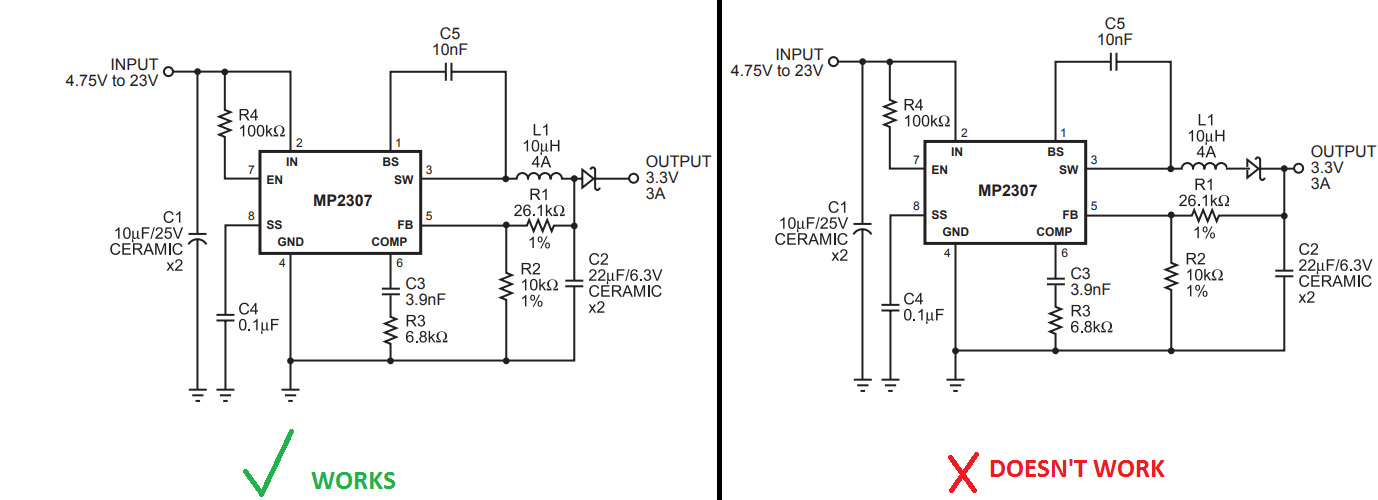Why doesn't work the second version? If I try this version no voltage on the output. Why?
I would like to make a reverse polarity protection, but the problem with the first version: in idle mode there is a voltage e.g: 12.00V, but when I connect a variable load the voltage decreases when the current increases, because more voltage drop on the schottky-diode. I would like to use a reverse polarity protection but I don't want that voltage drop vs current increase. I can't use a mosfet because I use 1V output voltage too.


